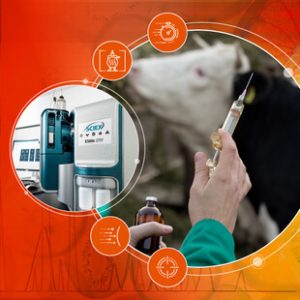 As hospitals struggle with increasingly hard-to-treat antimicrobial resistance (ARM) bacterial infections, related deaths now exceed 700,000 per year globally and are predicted to reach 10 million per year by 2050. There’s no denying that these statistics are both shocking and concerning, as existing antibiotics are increasingly losing their effectiveness.
As hospitals struggle with increasingly hard-to-treat antimicrobial resistance (ARM) bacterial infections, related deaths now exceed 700,000 per year globally and are predicted to reach 10 million per year by 2050. There’s no denying that these statistics are both shocking and concerning, as existing antibiotics are increasingly losing their effectiveness.
While researchers work relentlessly to discover new classes of powerful antibiotics that could someday help to address a looming public health crisis, measures are being taken to restrict the impact of drug-resistant infections. AMR occurs naturally over time and is a complex issue with a multitude of factors to consider when it comes to quantifying causes and managing prevention. However, antibiotic resistance is accelerated by the misuse and overuse of antibiotics, and the link between animal ingestion of antibiotics and increasing resistance in humans is widely acknowledged.
Preventing Drug Residues Hitchhiking into the Food Chain
Veterinary drug residues are making their way into the food chain, and human consumption of meat, fish, and crops is contributing to ARM, as well as other health epidemics such as hypersensitivity reactions and carcinogenicity. The use of antibiotics for livestock greatly exceeds the use for humans, and it is estimated that animal ingestion of antibiotics accounts for approximately 70-80 percent of total consumption worldwide. This is having a direct impact on human antibiotic intake.
Fortunately, there is a higher awareness of potential risks surrounding the (improper) use of veterinary drugs, and many countries have enforced legislation to restrict the usage of these substances. Agriculture will always include a level of necessary use for good animal welfare or to prevent crop failure, but the intention is to reduce veterinary drug residue levels in food products.
Multiclass Veterinary Drug Residue and Antibiotic Analysis
Detecting trace quantities of veterinary drug residues can be challenging for labs because they are complex, containing actives from a variety of chemical classes, such as antibiotics, antiparasitics, and non-steroidal anti-inflammatory drugs. While there are several analytical approaches available, few come close to mass spectrometry in delivering a fast and highly selective routine screening method.
High-resolution accurate mass spec technology from SCIEX is proven to identify and quantify very low levels of multiclass antibiotics and hormone residues across a comprehensive range of food samples:
- X500R QTOF with SWATH® Acquisition analyses data faster
- Verified spectral library with hundreds of antibiotics
- Accurately profile the composition of samples
- Rapid glycan heterogeneity identification
- Highly selective MRMHR detects trace levels
- Maximize uptime and robustness with SCIEX Turbo V™ source
- Tackle difficult matrices with co-eluting matrix compounds
SCIEX combines best-in-class mass spec hardware, software and support services to bring you an extensive solution for faster and simpler multi-residue detection. If you want to simplify your veterinary drug residue and antibiotic analysis workflows with an accurate method that analyzes low levels of analytes within complex matrices, look no further than the cutting edge high-resolution accurate mass spec solutions from SCIEX.Access a range of informative videos, webinars, tech sheets and other useful resources >






 Contact Support
Contact Support
0 Comments